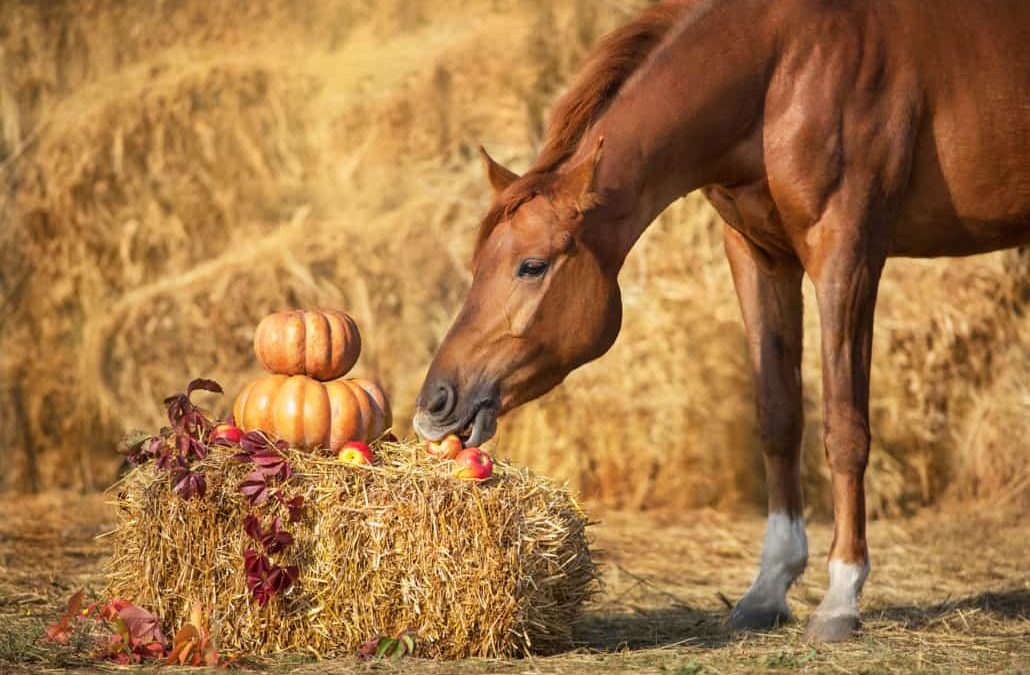
by Ivy Bergstrom | Sep 13, 2021 | Horse News
I don’t know about you, but as soon as the days get colder and the leaves start turning, I feel a sense of excitement. The seasonal change makes me eager to break out the decorations and find some new DIY projects to welcome autumn. Then I thought: “Why not use this creative motivation to come up with some fun horse stall ideas for my horse-loving friends?”
So grab a warm drink (preferably something with apple, pumpkin, or cinnamon), put your creative pants on, and let’s get into it!
Functional Horse Stall Ideas
If you’re ready to take on a bigger project that will benefit you and your horse for years to come, you might just “fall” for these horse stall ideas:
DIY Horse Washing Stall
Consider adding a horse washing station to your stall for easy grooming in any season. Add a concrete floor and drain, overhead shower system, and rubber floor mats to keep your horse clean, happy, and comfortable in any weather.
Add a wall-mounted basket with brushes, shampoos, and any other grooming supplies of your choice for an all-in-one grooming station! This makes for easy cleanup, too.
DIY Horse Tack Room
Adding a separate tack room to store your bridles, saddles, blankets, and other equipment has many benefits. Dedicating a space for these items will reduce the risk of losing items because it will all be stored in one place. Adding a sliding door will help keep the dust out, and is less noisy than regular swinging doors – great for skittish horses.
Natural Lighting Ideas for Horse Stalls
The more natural light you can have, the more you save on electric bills during the day. Consider adding a sliding skylight or windows for a simple solution. You can also add a dutch door with bars on the bottom for extra ventilation. Always make sure to have adequate air flow for your horse’s health and happiness.
Why Are There So Many Different Types Of Horse Breeds?
Pumpkin spice and everything nice! It’s the little touches that make a space feel so special. So why not spread the autumn cheer with these fall-tastic horse stall ideas?
Halloween Horse Friendly Treat Recipes
Trick or treat, smell my…hooves? If cooking or baking is your passion, this is the perfect opportunity for you to have some fun this fall. On top of making your house smell delicious, bringing your horse some treats in moderation will build trust and is the perfect boredom buster. Check out these scary-delicious and easy recipes to treat your horse this fall season here.
Freshen Up Your Stall With Fall Scents
Horse stalls and stables usually get pretty stinky (not a big surprise). If you have the space to safely do so (a well-ventilated area in/near the stall where horses do not have access to touch/be overwhelmed by scent), try these wax melts. They have no open flame – just make sure that you supervise when in use. The comforting smell of apples and more will make the area more comforting.
Get Creative With Decor!
When you’re thinking of horse stall ideas, consider what’s already in front of you! Hay, pumpkins, berries, leaves, and corn are all great materials that can be repurposed as fall decor. Try making horse-themed jack-o-lanterns (find stencils here) for a spooky-fun flair.
There you have it – the opportunities are endless! I bet you’ll come up with some un-be-leaf-able results. Love happy, healthy horses? View our products or contact BRD Vet Rx today.
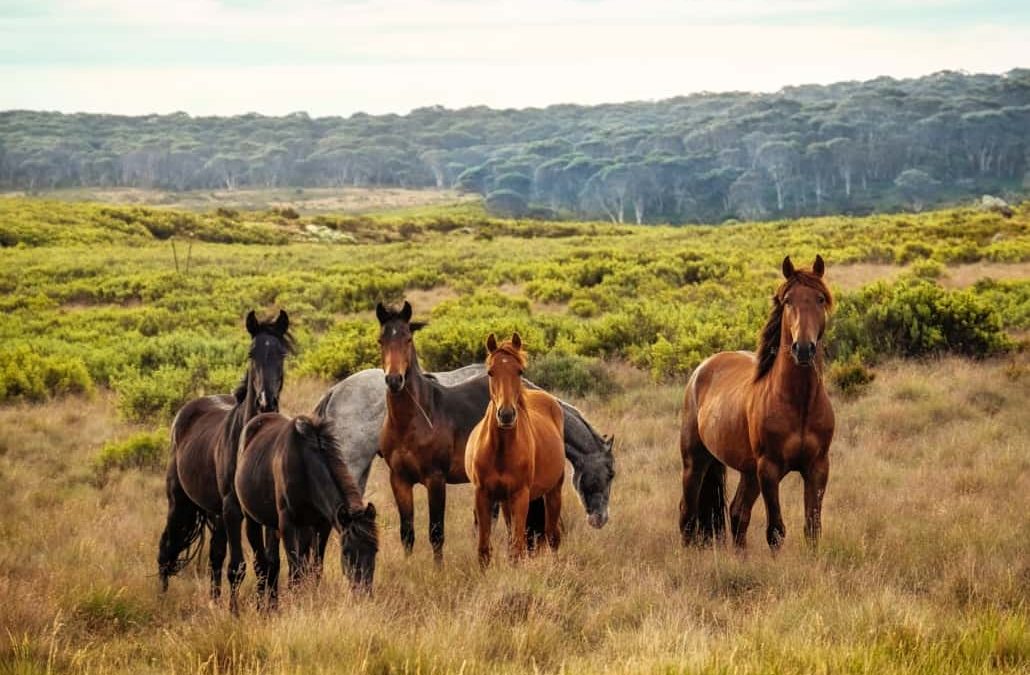
by Ivy Bergstrom | Aug 30, 2021 | Horse News
Can you believe that the history of horses dates back to nearly 50 million years ago? These intelligent and majestic animals provide joy and purpose for many people around the world – from their cuteness to the ability to form meaningful connections with humans, it’s hard to think of a world without them.
The History of Horses: Where Did They Come From?
Horses have existed on Earth as far back as 45-55 million years ago. They originally evolved in North America, then expanded their population globally. The original horses in North America went extinct about 10,000 years ago after they dispersed – it was not until roughly 6,000 years ago that they were starting to be domesticated by humans.
The history of feral mustang horses you see roaming the USA today may be surprising: they are descendants of domesticated Spanish horses, brought here by explorers and colonists around the 16th century. They aren’t considered “wild” because they were domesticated before being brought to the United States.
According to the Integrated Taxonomic Information System (ITIS), all domestic horses (feral and living with humans) belong to one species: Equus caballus.The beginning of horse history with humans started in Central Asia – where they were most likely first domesticated. It was also possible that other populations around the world were doing the same thing at the same time.
What Did the First Horses Look Like?
The history of horses starts small…literally. The Eohippus, or “dawn horse” was the first ancestral horse, and was about the size of a fox. It had a smaller head and arched back, and was honestly pretty dang cute if you ask me (see here). The Eohippus and its evolved relatives eventually went extinct.
The horses we know today branch from the Miohippus, which had adapted teeth to eat grass (which was widespread in North America).
Why Were Horses Domesticated In the First Place?
Initially, horses were considered a valuable resource and were kept for their milk and meat, according to Oklahoma State University. People on the Asian Steppes greatly benefitted from keeping horses around, and even drank fermented mare’s milk when they wanted to party (people still consume this alcoholic beverage today – I think I’ll pass…).
How Did Horses Get to Their Role In the Human World?
Horses are herd animals that follow the lead (dominant) horse(s) in their group. When humans noticed that horses respected them and took commands when in captivity, everything changed. People found new uses for horses such as transportation, racing, training, and companionship. This was only the beginning!
Why Are There So Many Different Types Of Horse Breeds?
Because of the diverse DNA found in the first horses, it is believed that there were many different horses spanning the globe. From this diverse gene pool, humans learned to selectively breed horses to get more desirable behavior and appearances. There are over 350 different breeds of horses today.
The history of horses that we see today is 50 million years in the making – pretty amazing, right? Who knew that your type of teeth could be the deciding factor in whether or not your species could survive. If you have any questions regarding horses or how to keep your horse happy and healthy, contact BRD Vet Rx today.
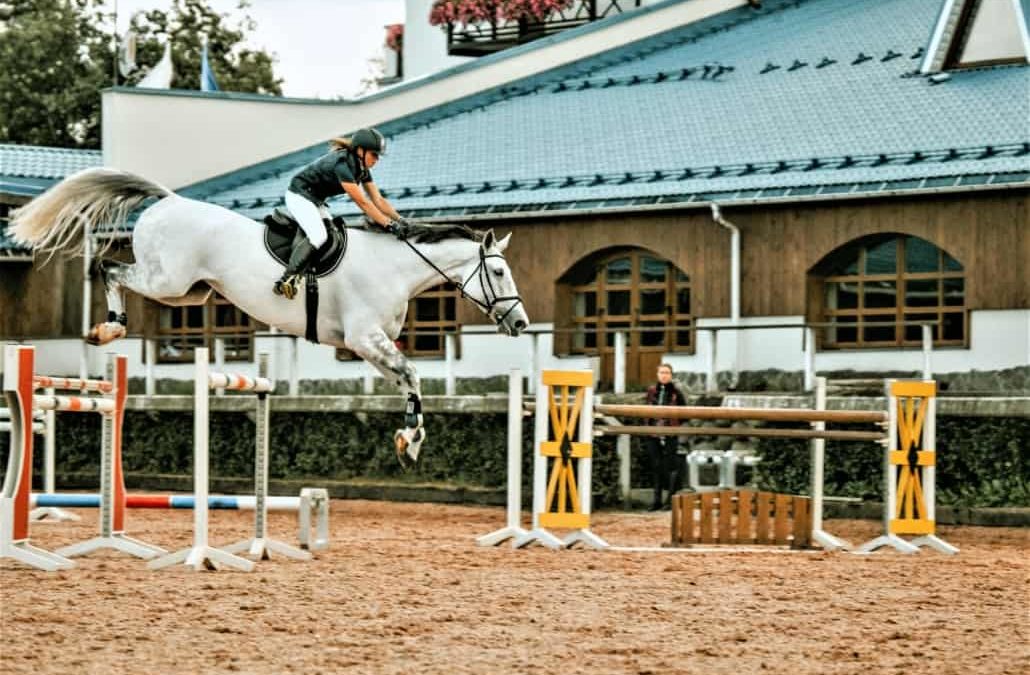
by Ivy Bergstrom | Aug 3, 2021 | Horse News
For an athlete, representing your country in the Olympics is one of the highest honors you can hope to achieve. It’s the payoff and reward for the insane amount of training, pain, and sacrifice you have to go through in order to be the best. Trainers may receive the recognition, but how do horses in the Olympics fit into the picture? It takes years of hard work and training for them to find out.
What Are Dressage Horses?
“Dressage” is a French word that evolved from the verb “dresseur”, meaning “to train”. It is an Olympic equestrian competition where the trainer signals their horse to perform pre-decided movements to music. Horses in the Olympics are judged on how well they perform the movements. The rider must learn how to sit in the saddle the most efficient way to let the horse perform to its peak potential, with elegant movements.
Dressage Horses in the Olympics
The Imperial Spanish Riding School of Vienna was established in 1572 when horse dressage started to gain popularity. It became an Olympic sport in 1912, and only military officers were allowed to compete until 1953 (when all civilians were allowed to participate).
It takes years to master dressage, considering most horses in the Olympics are 12-14 years old. That means they have been training for roughly ten years (they sure aren’t horsin’ around)! 🐴
Even though dressage basically just means “training”, it means more than that. Horses are taught how to perform different moves, but the real importance is the connection between the horse and the rider. The goal is to have the horse perform the moves gracefully, without looking like the rider is doing anything at all (almost like horse telepathy!). That’s why it can take so long to master.
How Do Horses Get to the Olympics?
Did you know that dressage horses in the Olympics get passports at birth? They include important health information for when they travel. They are transported via plane to the games, where over 10 grooms and vets accompany them. Usually, each horse stall holds two horses.
The in-flight refreshments include hay with high water content, along with water to drink to ensure that the horses don’t get dehydrated. The take-offs and landings are also more gradual so that the horses do not get frightened by a quick drop in elevation.
For the 2020 Tokyo Olympics, horses had to be quarantined for a week before they left, and they were immediately moved to a training bubble to prevent the spread of diseases. Then, it was game on!
Learn More About Horses in the Olympics
Click here to see the 2020 results for horse dressage. The team at BRD Vet Rx loves to see happy, healthy horses, and we are an equine pharmacy that reflects that. Search our products or contact us today for more information about what sets us apart from the rest.
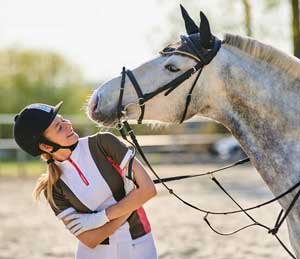
by Ivy Bergstrom | Aug 24, 2020 | Horse News
From medicine studies to therapy and more, the benefits of horses in education are nearly endless. In celebration of national back to school month, let’s explore three key roles that horses play in different aspects of education and community.
Equine Veterinary Science

Veterinary studies with horses have gotten us far – we’ve developed many medications to help other horses live their happiest and healthy lives. In addition, human doctors can learn a lot from working with horses in a equine veterinary science setting.
Much like people, horses feel emotions and form relationships. They are sensitive to their surroundings and can read the emotions and body language of those around them. Having a doctor learn how to interpret the horse’s reactions will make them more aware of their human patients.
For example, they will learn how to sense if a patient is uncomfortable with the cold temperature of instruments, smells of disinfectants, or if they get anxious at the sight of a needle. This will help the doctor provide a more pleasant and efficient experience for both parties.
Therapy With Horses

When it comes to horses in education, therapy is well-known to benefit many people. There is a wide variety of programs to offer personalized remedies, such as Equine-Assisted Psychotherapy, Hippotherapy, Equine-Facilitated Learning, Therapeutic Riding, and more. These programs aim to help people who struggle with mental and cognitive issues, physical disabilities, and developmental delays.
Although every horse therapy program is different, people will learn how to trust, listen, and interact through with the horse. Students will be able to practice non-verbal cues and control impulses by learning how to calmly communicate their thoughts.
There is a mutual respect for the horse and caretaker, and finding that balance will encourage patience and character growth. Riders will be able to improve balance and muscle control. Plus, getting outside and interacting with these impressive animals is fun and relaxing!
New Horseback Riders
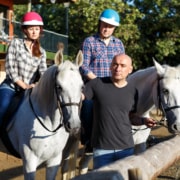
Introducing your child to horseback riding will teach them many hard and soft skills. For example, learning basic first aid such as how to take a pulse will instill a sense of responsibility and level-headness that will help with their human relationships. In addition, new horseback riders take on the mechanics of riding while how to effectively communicate with the horse. This provides many emotional benefits.
Children who care for horses will learn that patience, compassion, and empathy are essential. They will be able to use these skills to form healthy connections at a younger age. And when challenges arise, learning how to work through frustrations in a calm way is great practice.
Consider the Benefits
Whatever the method, horses in education are a fun and effective way to benefit people from varying backgrounds. From mental and physical healing to learning mutual respect and how to communicate without words, horses play an important role in benefiting your community. As people around the world prepare to go back to school with the quest for knowledge, take a second to appreciate how horses have benefited the lives of so many people.







